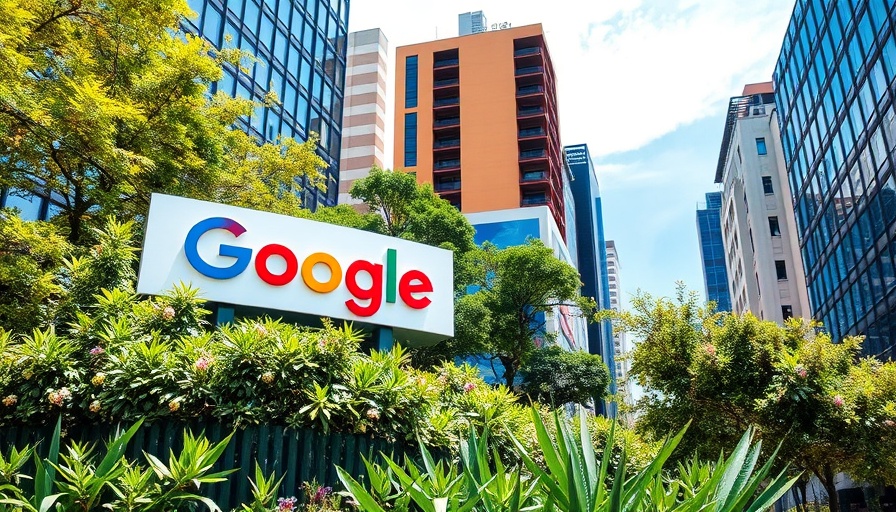
Understanding Google's Walled Garden Strategy
Recent studies reveal a fascinating shift in user behavior on Google, often referred to as Google’s ‘walled garden.’ New findings indicate that users are now making an average of 10 clicks on Google before venturing off to other websites. This behavior highlights Google's strategy of keeping users engaged within its ecosystem, utilizing features that provide quick answers without leaving its domain.
The Implications of Click-Driven Engagement
In March, Google reached a milestone with an increase in its 'pages per visit' metric, suggesting that users are interacting with more of its features—like search results and snippets—before considering an click to an external site. This trend is crucial for marketing professionals who rely on organic clicks to boost website traffic. With users spending more time within Google's interface, strategizing for visibility in the ever-changing SERP landscape is now more essential.
Why Are Users Staying Within Google?
Google’s increasing number of clicks illustrates a broader plan to dominate digital advertising and information retrieval. By enhancing in-platform features, such as knowledge panels and direct answer boxes, users can satisfy their queries without needing to navigate away from the search engine. This retention strategy serves dual purposes: enhancing user satisfaction while establishing Google's authoritative presence as the primary source of information on the web.
ChatGPT vs. Google: A Traffic Perspective
While Google maintains a strong in-platform retention strategy, ChatGPT has been found to drive significantly more traffic to external websites, generating 2.3 visits per user compared to Google’s 0.6. Although Google's overall volume of outgoing traffic leads, this statistic reveals a clear difference in how users interact with these two platforms. ChatGPT users are more likely to explore various websites, creating new avenues for SEO specialists to tap into for traffic generation.
SEO Strategies in the Evolving Digital Landscape
With Google's retention strategy on the rise, SEO professionals and digital marketers face new challenges. To thrive in this paradigm, marketers should focus on optimizing content for featured snippets and other SERP elements that garner immediate user attention. Developing robust attribution models that can track user interactions across platforms, including new players like ChatGPT, can also enhance strategies for engaging users more effectively.
The Future of Online Interaction: What Lies Ahead?
As digital platforms evolve, we can expect significant changes in how users interact with search engines. The rapid growth of AI-driven search platforms, for example, challenges the status quo, offering alternative avenues for leveraging search engine optimization. For instance, platforms like Perplexity and Grok have recently shown impressive growth rates, emphasizing the necessity for traditional players like Google to adapt continually. This constantly shifting landscape demands agility from marketers and business leaders alike.
Final Thoughts: Navigating the New SEO Challenges
As Google continues to cultivate user engagement through its walled garden approach, brands must adapt their strategies accordingly. The increasing complexity of user interactions on search engines demands a holistic approach to digital marketing, one that incorporates both traditional SEO tactics and innovative outreach through AI-driven platforms.
 Add Row
Add Row  Add
Add 




 Add Row
Add Row  Add
Add 

Write A Comment